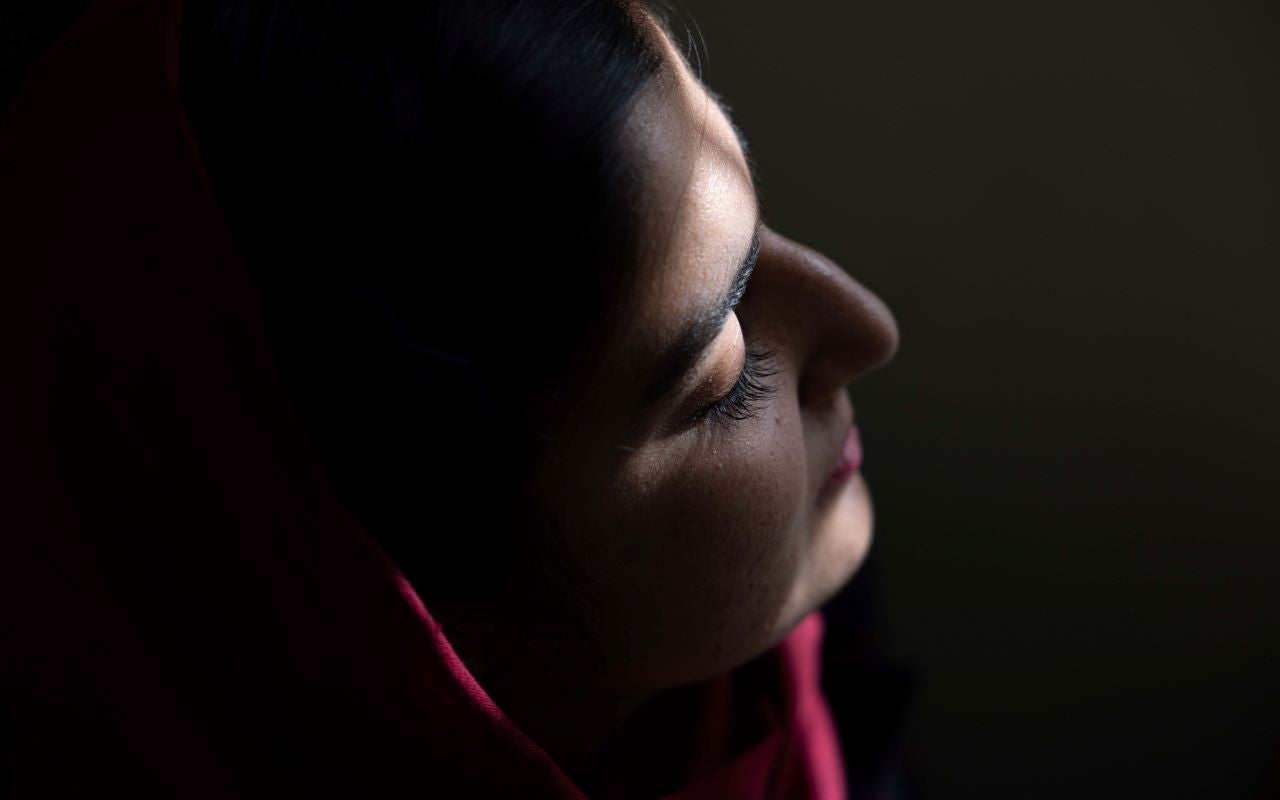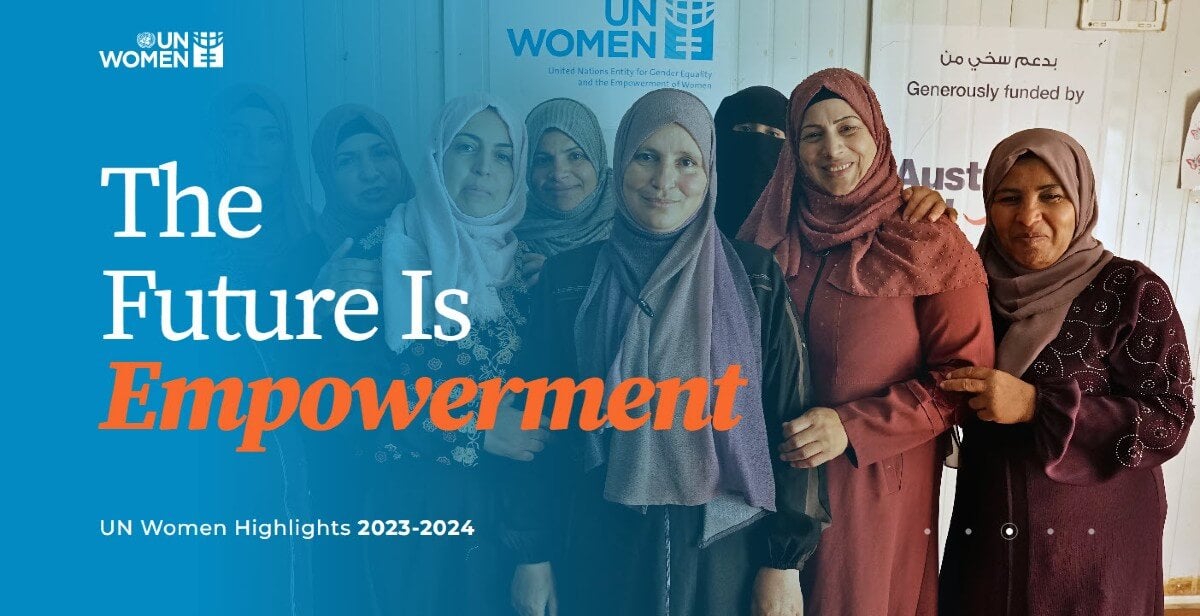FAQs: Afghan women three years after the Taliban takeover
Afghanistan is currently grappling with multiple overlapping crises, all of which are exacerbated by escalating gender inequalities. The Taliban has issued at least 70 decrees and directives that directly target the autonomy, rights, and daily lives of women and girls. This oppressive environment has resulted in a marked deterioration in the quality of life for Afghan women, as reported by various data sources and firsthand accounts from Afghan women themselves.
These challenges manifest both within the domestic sphere and in the severe restrictions placed on women and girl’s access to public spaces, employment opportunities, reproductive rights, maternal health care, education, mental health services, and beyond.
Yet, in the face of this increasingly harsh reality, Afghan women continue to demonstrate remarkable resilience and courage. From the seemingly simple act of stepping out of their homes to the more complex efforts of running businesses, organizing communities, and striving for equality, their determination remains unshaken and, in some cases, is even growing stronger.

What is the status of women’s rights in Afghanistan?
The status of women’s rights in Afghanistan has deteriorated drastically under Taliban rule. Decades of hard-fought progress toward gender equality have been obliterated by a web of oppressive directives that target the rights, autonomy, and very existence of Afghan women and girls.
The Taliban have institutionalized restrictive gender norms, such as banning women from education and most professions, and have entrenched them in official decrees. These measures have escalated to the point where women are barred from public spaces, including parks, gyms, and sports clubs.
A decree from December 2021 mandates that women must be accompanied by a male relative when traveling more than 77 kilometers from home. However, in some parts of the country women are expected to travel with a male guardian when traveling much shorter distances and can be interrogated and harassed at checkpoints when traveling alone. For those without close male relatives—such as widows without sons or brothers—the situation is dire, leaving them unable to even buy food without risking their safety.
This chaotic mix of formal and informal decrees, along with their inconsistent enforcement, has created an atmosphere of pervasive fear and anxiety among women and girls. The once-promising strides toward gender equality in Afghanistan have been replaced by a nightmarish reality where women’s rights are systematically stripped away.
Are women and girls allowed to receive an education in Afghanistan?
Since August 2021, the Taliban have systematically dismantled women and girls’ access to education in Afghanistan, enforcing increasingly dire restrictions. Girls were first banned from secondary schools in March 2022, followed by a suspension from universities in December of the same year. By January 2023, the Taliban further deepened their oppressive grip by prohibiting girls from taking university entrance exams, effectively erasing the progress that had, in some provinces, seen higher examination participation rates for girls than boys.
The impact of these measures has been devastating. School enrollment has plummeted, and by April 2023, a staggering 80 per cent of school-aged girls and young women were out of school, including 1.1 million girls of secondary school age. While primary schools remain open to girls, nearly 30 per cent of Afghan girls have never even begun primary education due to deep-rooted sociocultural norms, prohibitive costs, and safety concerns related to travel.
What is also clear three years in, is that the Taliban’s restrictions on the rights of women and girls will affect generations to come. UN Women analysis shows that by 2026, the impact of leaving 1.1 million girls out of school and over 100,000 women out of university is correlated with: an increase in the rate of early childbearing by 45 per cent; and an increased risk of maternal mortality by at least 50 per cent.
It has been projected that the Afghan economy will lose USD 9.6 billion, equivalent to two thirds of today’s gross domestic product, by 2066 if the suspension of women’s access to higher education remains in place.[1]
The situation is even more dire for girls living with disabilities, with an estimated 80 per cent unable to access education at all. This relentless assault on girls’ education is not only a violation of their rights but also a deliberate attempt to erase their future, condemning generations of Afghan girls to a life of dependence.
Are women allowed to work in Afghanistan?
Afghan women have been systematically stripped of their economic independence. They have been forced out of public administration roles, their presence in the private sector has been drastically reduced, and many women-owned businesses have been forcibly closed.
In December 2022, the Taliban imposed a ban on women working for national and international NGOs, a restriction that was extended to Afghan women employed by the UN in April 2023. By July 2023, even beauty salons—a vital source of income and autonomy for many women—were ordered to shut down.
While the Taliban have allowed limited exceptions in sectors like health and education, these come with severe restrictions, and the number of women participating in the workforce continues to plummet. Many organizations now prefer to hire men, further sidelining women and eroding their last remaining avenues for economic engagement. This relentless campaign to erase women from public and economic life is not just a rollback of rights but an assault on their very existence and autonomy.
What is life like for women in Afghanistan under Taliban rule?
Afghan women are increasingly isolated, with 18 per cent reporting that they have not met with any women outside their immediate family in the past three months. This forced isolation is driving many women and girls into deep despair. Alarmingly, 8 per cent of survey respondents knew at least one woman or girl who had attempted suicide since the Taliban’s takeover in August 2021.
Afghanistan now ranks among the world’s countries with the highest rates of gender-based violence, fuelled by the Taliban’s oppressive decrees and entrenched patriarchal norms that strip women of social privilege, decision-making power, and control over assets and resources. The Taliban have systematically dismantled protections against gender-based violence, including abolishing the judicial system that once allowed female judges, prosecutors, and lawyers to fight for women’s rights.
The rates of early, forced, and child marriages are alarmingly high and continue to rise as families, facing dire economic and humanitarian crises, resort to these practices as survival mechanisms. In 2023, data revealed that 28.7 per cent of Afghan girls under 18 were married, including 9.6 per cent under the age of 15.
Even before the COVID-19 pandemic, Afghan women bore the brunt of unpaid care and domestic work, spending more than three times as much time on these tasks as men. The pandemic worsened these inequalities, which have again been exacerbated by the Taliban’s rule, restricting their rights to education and work, which diminishes their future economic prospects and increases the risk of being trapped in early, forced, or child marriages.
What are the laws regarding women’s dress code in Afghanistan?
Afghan women are now required by law to cover themselves completely, from head to toe, when in public. This instruction extends to wearing a full-body covering, often interpreted as the burqa, which leaves only a mesh screen for vision. The Taliban’s decrees have gone beyond just dictating what women must wear; they have also dictated their presence in public spaces. The Taliban has openly stated that the ideal situation is for women to avoid leaving their homes entirely, unless absolutely necessary.
These dress code restrictions are not just about clothing; they are part of a broader strategy to erase women from public life, restricting their movement, expression, and participation in society. This rigid control over women’s bodies and lives is aimed at reinforcing a deeply patriarchal and repressive structure.
Men in Afghanistan have also been subjected to dress restrictions, though not as severe as those imposed on women. In December 2021, for example, Afghan men were ordered to abandon Western-style suits in favor of traditional Afghan attire. Additionally, men were instructed not to shave or trim their beards.
How do Afghan women participate in politics and society?
Afghan women have little to no space to influence decisions impacting their lives. To date, no Afghan woman leads anywhere that has influence politically, at national or provincial level.
When Afghan women are engaged in the Taliban’s structures, their roles are largely about policing other women, ensuring they comply with their discriminatory decrees. This political erasure is mirrored at the social level: of the women UN Women surveyed, 99 per cent felt they had limited or zero influence on decision making in their communities.
It is also reflected in the home—the only place that the Taliban have told women it is safe for them to be. UN Women’s data shows that the percentage of women who feel they can influence decision-making in their own homes has dropped by nearly 60 per cent over the last year.
Civic space has shrunk for all civil society actors. Women-led and women-focused civil society organizations and activists have faced increasing restrictions by the Taliban that have led to banning women NGO workers, removing women in leadership positions, including as board members of NGOs, and forcing NGOs to replace the word “women” with “men” in project documents, among other consequences.
These developments significantly reduce the operational and staff capacity of women’s civil society organizations, compelling many to cease operations and others to fight hard to remain operational. Stifling restrictions impose dire economic and development costs.
What are the health care conditions for women in Afghanistan?
In 2022, only 10 per cent of Afghan women surveyed indicated being able to cover their basic health needs with the health services available to them, compared with 23 per cent of Afghan men.
A study conducted in 2022 among public and private health facilities in five Afghan urban centres showed perceptions among health professionals of an increase in maternal, infant, and child mortality since August 2021.
Confinement to the home also has significant mental health implications, limiting women’s access to physical exercise, social networks and communities, and adequate hygiene and sanitation facilities. This context appears to have sparked an acute mental health crisis, particularly among women and girls, whose distressing situation has given rise to a sense of hopelessness, anxiety, and despair.
Women and girls with disabilities face additional barriers to accessing health services due to an even higher likelihood of mobility restrictions and social isolation because of the intersection of gender discrimination and stigma and barriers associated with their disability. They are also more likely to experience higher rates of violence, and have less access to reproductive health care, even being at risk of forced sterilization.
How can the international community support women in Afghanistan?
The lack of any state framework for gender equality programming means that Afghan women are being left behind as the world makes strides towards equal rights as part of the Sustainable Development Goals and the implementation of the Beijing Declaration and Platform for Action.
This lack of state action places additional importance on UN actors, international nongovernmental organizations, national actors, and donors. The first Gender Country Profile on Afghanistan since the Taliban takeover, developed by UN Women with the financial support of the European Union, includes recommendations for all stakeholders in support of Afghan women and girls:
- Allocate long-term flexible funding: Provide sustained and adaptable funding to strengthen women’s civil society organizations.
- Direct funding for gender equality: Ensure that at least 30 per cent of all funding to Afghanistan is dedicated to initiatives explicitly aimed at promoting gender equality and women’s rights, avoiding support for gender-blind projects.
- Avoid normalizing discriminatory practices: Implement measures to prevent actions that could unintentionally support or normalize the Taliban’s discriminatory policies, norms, and values.
- Integrate human rights in all actions: Incorporate human rights, with a special focus on women’s rights, as a fundamental aspect in all humanitarian activities and basic human needs interventions.






